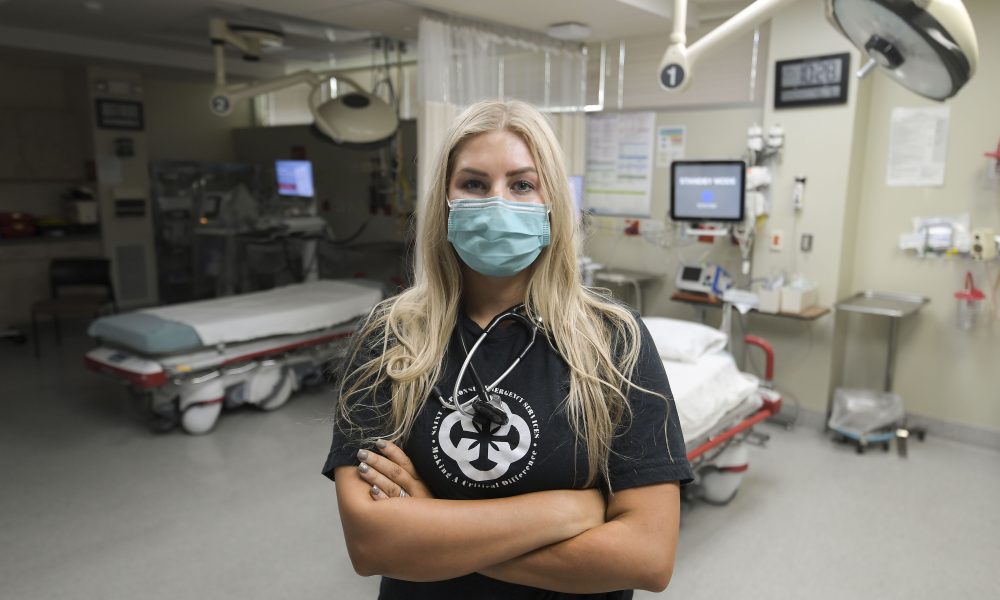About this series: Fentanyl is having a deadly impact on Malheur County, and one not well understood. The Enterprise reporting team of Mac Larsen, Isaac Wasserman and Cynthia Liu spent weeks learning about this threat. In this part, meet some of the people who deal daily with this risk to lives in our community. Share your comments and thoughts with an email to Editor Les Zaitz ([email protected]).
Madison Hartung, ER nurse
Multiple times a week Madison Hartung races the clock to bring her patient back to consciousness in the two-bed trauma center.
Their body is usually soaked with sweat and their skin is blue because their blood doesn’t have enough oxygen. They are overdosing on fentanyl.
Hartung, who is an emergency room nurse at Saint Alphonsus Medical Center-Ontario says she used to see an overdose a month.
“Now I’m seeing like three to four a week,” she said. Many are fentanyl-related.
Some of her patients come to the emergency room multiple times after relapsing and are known users.
For them, Hartung says there is no medical detox center in Ontario.
‘You see these kids on the brink of death. And some of them don’t make it.’
– Madison Hartung
“We’re kind of in a bubble here. Where we’re trapped because we don’t really have anywhere to send these people to get help,” said Hartung. “It’s kind of like you come in and you overdose and we’re here to stabilize you and get better but after that, our hands are tied.”
But many of her patients are kids. Middle schoolers as young as 13 are coming in. Their hearts are often stopped, and the CPR breaks their ribs in the effort to bring them back to consciousness.
“A lot of these young kids, they don’t know that they’re getting fentanyl,” said Hartung. “You see these kids on the brink of death. And some of them don’t make it.”
Hartung, who grew up in Ontario, is a mother too and she worries for Ontario’s children.
“When I was in school that never happened,” she said, referring to prevalence of opioid overdoses. But now it is happening. “It makes me worried for our kids that we’re seeing such a young population even being affected by this.”
Hartung said more pregnant mothers are overdosing too. When they need to be given naloxone, commonly known by its brand name, Narcan, to regain consciousness, their babies need to be given naloxone in utero because they are overdosing too.
Sometimes it takes multiple rounds of naloxone to revive a patient. Her patients will jolt back with violent withdrawal symptoms. More staff members are called into the trauma center to hold them down.
Because fentanyl is so strong, 50-100 times more potent than heroin, patients sometimes will need a naloxone drip to keep them alive.
“If someone’s not right there with them immediately, you only have a few minutes window to where you get an anoxic brain injury and then you can’t save them,” said Hartung.
That said, if people make it to the hospital, they usually survive.
The problem is only growing. In the emergency room, Hartung sees it affecting all types of people from all age ranges.
“It’s a daily thing,” she said.
–Isaac Wasserman, The Enterprise
RELATED COVERAGE:
PART 1: SNEAKY KILLER: Fentanyl in Malheur County
EXCELLENCE IN JOURNALISM – Available for $7.50 a month. Subscribe to the digital service of the Enterprise and get the very best in local journalism. We report with care, attention to accuracy, and an unwavering devotion to fairness. Get the kind of news you’ve been looking for – day in and day out from the Enterprise.




